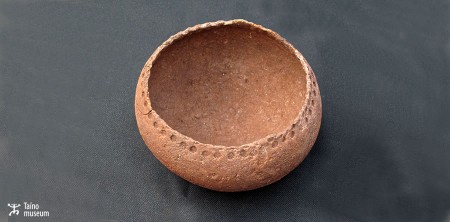This image represents a chief. Many Taino works of art belong to the chief, the cacique. The Taino culture reached its highest development in the island of Hispaniola. It is difficult to mark the beginning of the Taino. Their society emerged as a continuation of Caribbean prehistory for several thousand years. In some cases artifacts…
Read more
Taino vessel with anthropomorphic representation










